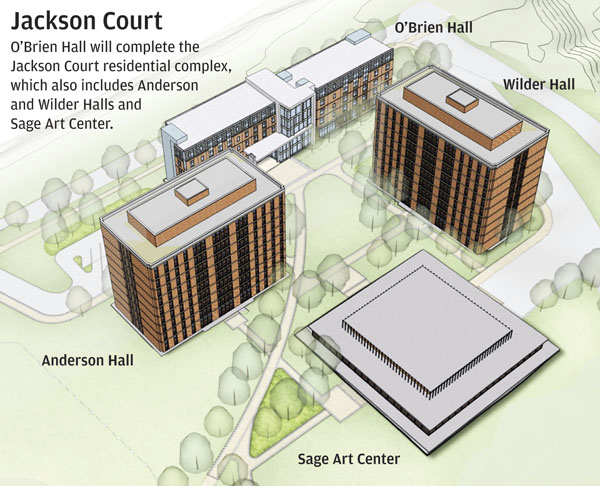
| River Campus | Thomas H. Jackson Court |
 |
| Artists Rendering of Jackson Court |
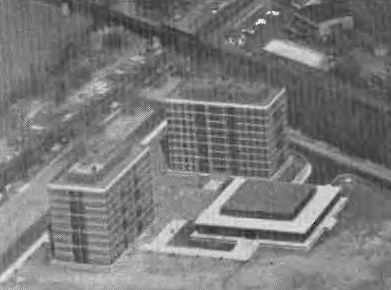 |
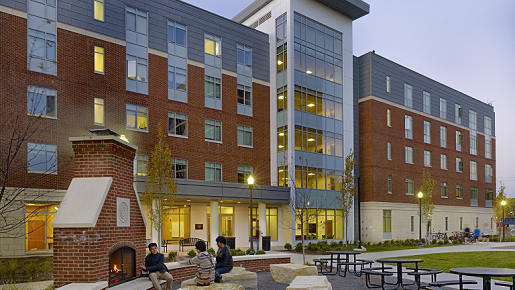 |
| Towers Living Center in 1964 |
Dennis O'Brien Hall |
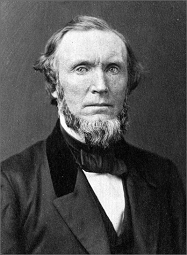 |
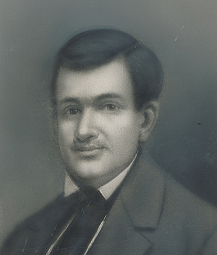 |
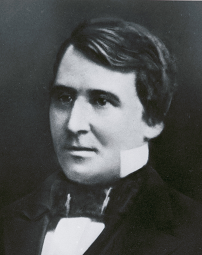 |
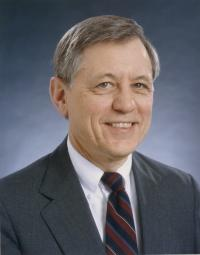 |
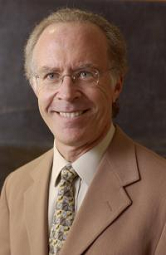 |
| Martin B. Anderson |
John N. Wilder |
William N. Sage |
Dennis O'Brien |
Thomas H. Jackson |
The need for more dormitory space combined with growing numbers of women students resulted in a decision to build a new coed dormitory north of the existing Women's Residence Hall. The new facility would consist of two ten-story towers to house 500 students and an attached dining facility. A third tower was anticipated in the planning. Construction began in late 1961 and the residence halls opened in September 1963 with the dining center finished the following month. The original names were East Tower, West Tower, and Towers Dining Center.
In late 1965 the Trustees voted to name the entire complex "Founders Court," with the west tower named at first University president Martin B. Anderson and the east tower for John N. Wilder, first chairman of the Board of Trustees. The dining center would be named after William N. Sage, long-time secretary of the Board of Trustees. Anderson's name was also used on the 1861 Anderson Hall, first building on the Prince Street Campus.
The Sage dining center was closed in May 1972 after students were allowed to eat in any dining hall and Sage revenues dropped. It was reopened as a recreation center that fall and in 1975 became the Sage Arts Center.
A third tower was opened
in 2012 and was named after former President Dennis O'Brien. The
entire complex was also renamed after former President Thomas H. Jackson.
References
1857 Rochester:
A Poem Delivered Before the Literary Societies of the University of
Rochester, July 7, 1857, by John Nichols Wilder
1858 John N Wilder (1813-1858) Grave in Albany Rural Cemetery, Menands, New York
1886 An
Outline History of the University of Rochester
Page 19: 1858. July 15. John N. Wilder, one of the earliest,
staunchest and most useful of the friends of the University, and, from its
organizatin, President of the Board of Trustees, died.
1890 William N. Sage (1819-1890) Grave in Mt. Hope Cemetery
1950 Our first century of service, 1850-1950, Monroe County Savings Bank
1961 "UR to Build Dorm for Men, Women," Democrat and Chronicle, April 26, 1961, Page 18.
1961 "Bid Chosen for Construction of New Dormitory Complex," Campus Times, October 3, 1961, Page 1.
1963 "2
New UR Buildings to Open," Democrat and Chronicle, September
1, 1963, Page 2B.
Hopeman and Towers
1963 "Towers Depicted as Plush -- An Experiment in Coed Living," Campus Times, September 20, 1963, Page 1. | Part 2 | Pictures |
1963 "Third Tower Included in Expansion Scheme," Campus Times, October 11, 1963, Page 1. | Part 2 |
1963 "Experiment
in Undergraduate Living," Rochester Review 26(1):22-25
(September-October 1963)
The Towers Living Center. Includes typical floor plan.
1963 "Dining Center to Open During Week of Oct. 28," Campus Times, October 18, 1963, Page 1. | Pictures |
1965 "Trustees
to Rename Towers, GLC in Honor of Previous UR Leaders," Campus
Times, December 14, 1965, Page 3.
West Tower - Martin Brewer Anderson; East Tower - John Nichols Wilder;
dining hall - William Nathan Sage.
1966 "May
Miscellany," by Arthur J. May, Rochester Review 28(3):29
(Spring 1966)
Renaming of Founders Court.
1972 "Reopened Sage Becomes UR Recreation Center," Campus Times, September 18, 1972, Page 1.
1975 "Sage to House Fine Arts," Campus Times, September 19, 1975, Page 1.
1975 "Change
in Sage Function," Campus Times, October 7, 1975, Page 1.
Transferred to Fine Arts
1977 History
of the University of Rochester, 1850-1962, by Arthur J.
May. Expanded edition with notes
Chapter 37, In Pursuit of Excellence
To take care of the constantly growing undergraduate body, the corporation
requested and secured (1960) a low interest loan of $3 million from the
Federal Housing and Home Finance Agency to construct two high rise
residential structures and a low building as a community dining center.
Additional funds for the project were borrowed from Rochester banks at low
interest rates, and all to be amortized through operation of the complex.
It was first thought of placing the new dormitories north of the Alumni
Gymnasium and tennis courts along the River Boulevard, but the objection
was raised that nine-story edifices there would dominate the academic
scene, so an alternate plot at the extreme northeastern section of the
campus, slightly back from the Genesee River, was chosen, which
necessitated the relocation of certain playing fields. The two
dormitories, with facilities for a maximum of 248 students each, were
named (1966) Anderson Tower, in honor of the first president of the
University, and Wilder Tower (on the east),to commemorate the dedicated
labors of John N. Wilder, chief of the University founding-fathers; the
name of William N. Sage, a key personality in the first four decades of
the University's life, was affixed to the dining center, and the group as
a whole was designated the Founders Court.
Residence in the Towers, which were opened in 1962, was restricted to
Seniors and some Juniors, and was on a coeducational basis, a rather novel
concept in the eastern part of the United States. Some floors were
assigned to men, others to women, and plans were kept flexible so as to
meet shifting enrollments of the two sexes. In support of the
coeducational feature, the point was made that the experiment would afford
socially valuable training in maturity and responsibility and would
constitute worthwhile preparation for adult life.
If the exterior of the rectangular Towers was austere brick with limestone
trim, and, except for extensive use of glass, rather unimpressive, the
interior was delightful; high-speed elevators were installed, and glass
doors opened into corridors lined with marble walls. A typical floor
contained an apartment-type suite for six students at each corner and four
double rooms with shared bathroom facilities in the center space. Each
suite had a living room, and a corridor leading from it opened the way to
four single and one double bedroom, with pleasant study areas and closets.
On each floor there was a kitchenette equipped with: a
freezer-refrigerator, a stove, and garbage disposal.
2004 "Was William Nathan Sage Hall always an arts center?," Campus Times, April 8, 2004
William
Nathan Sage papers, Rare Rooks and Special Collections, Rush Rhees
Library
William Nathan Sage (1819-1890) was born in Ballston Spa, New York, but
moved to Rochester at an early age. He graduated from Brown University in
1840, and then established a book publishing company in Rochester with his
brother Nelson Sage. In 1847 he was elected county clerk and held this
office for three years. In 1860 he joined the firm originally founded by
his father Oren Sage, Pancost, Sage, & Morse. He later helped organize
the Sage Deposit Company and was also a founder and director of Monroe
County Savings Bank. When the University of Rochester was founded in 1850,
William N. Sage became the secretary of the Board of Trustees. In 1851 he
also became the Board's treasurer. He held both offices until his death in
1890. His work did much to contribute to the success of the University.
© 2021 Morris A. Pierce